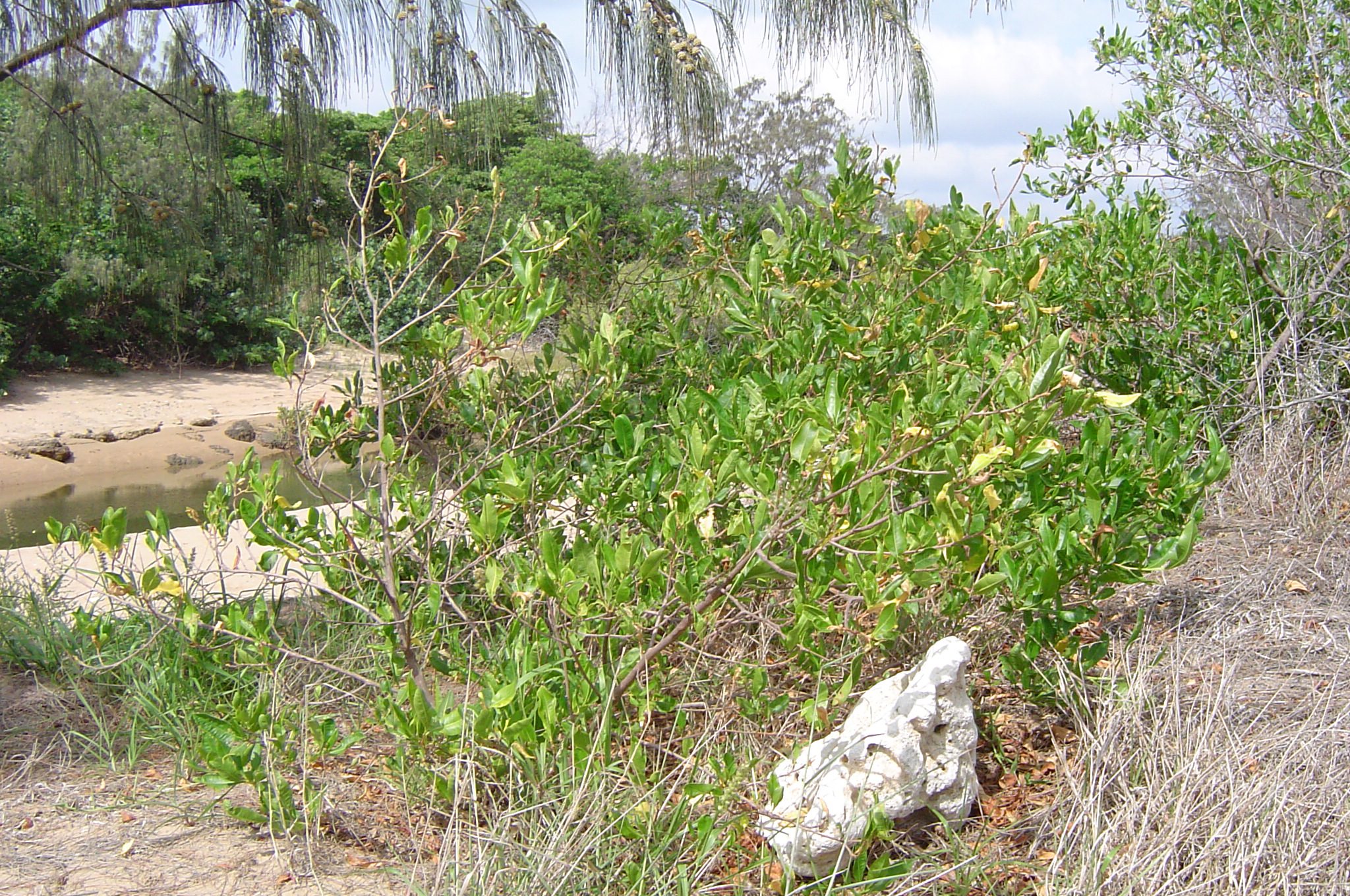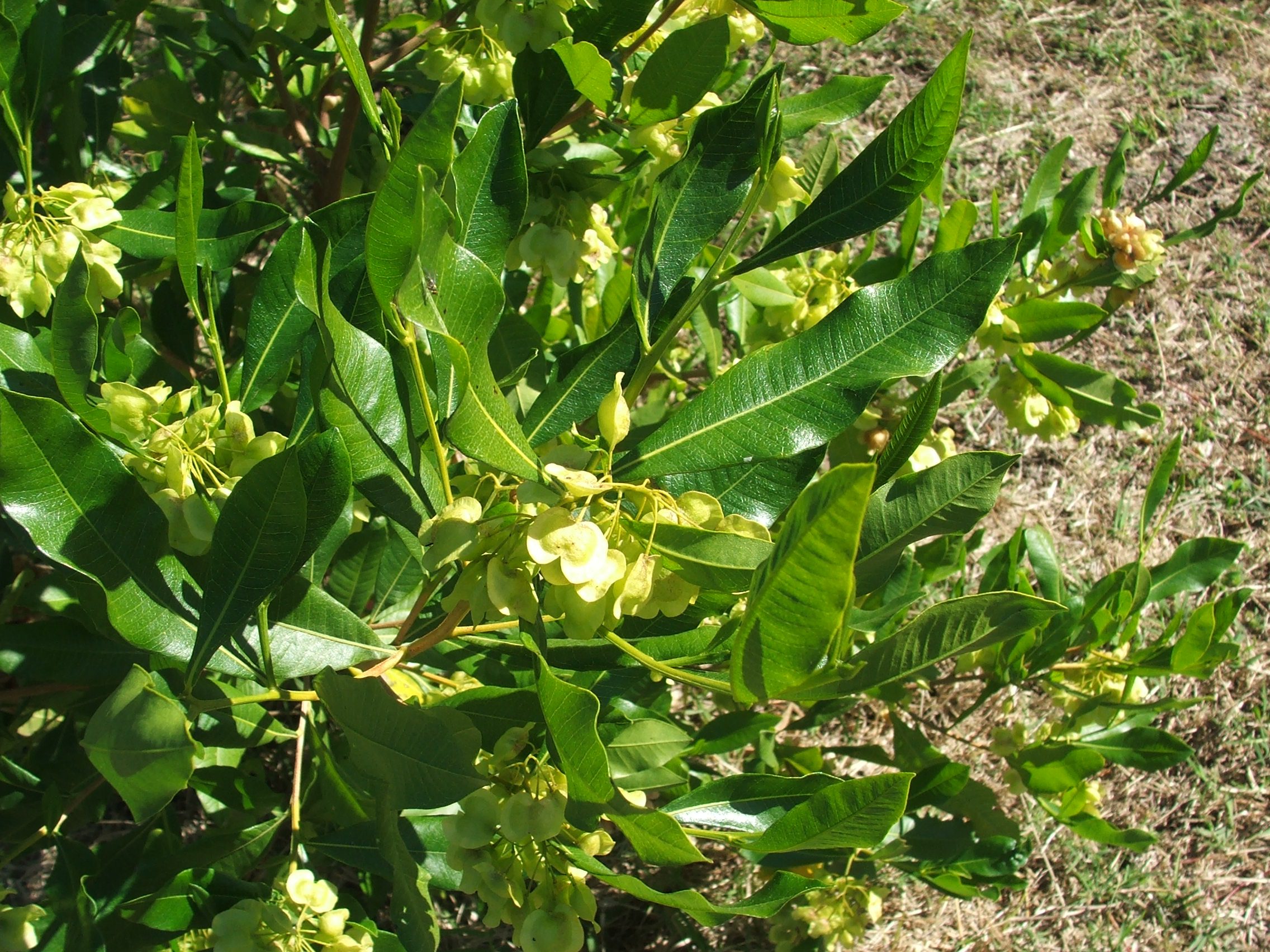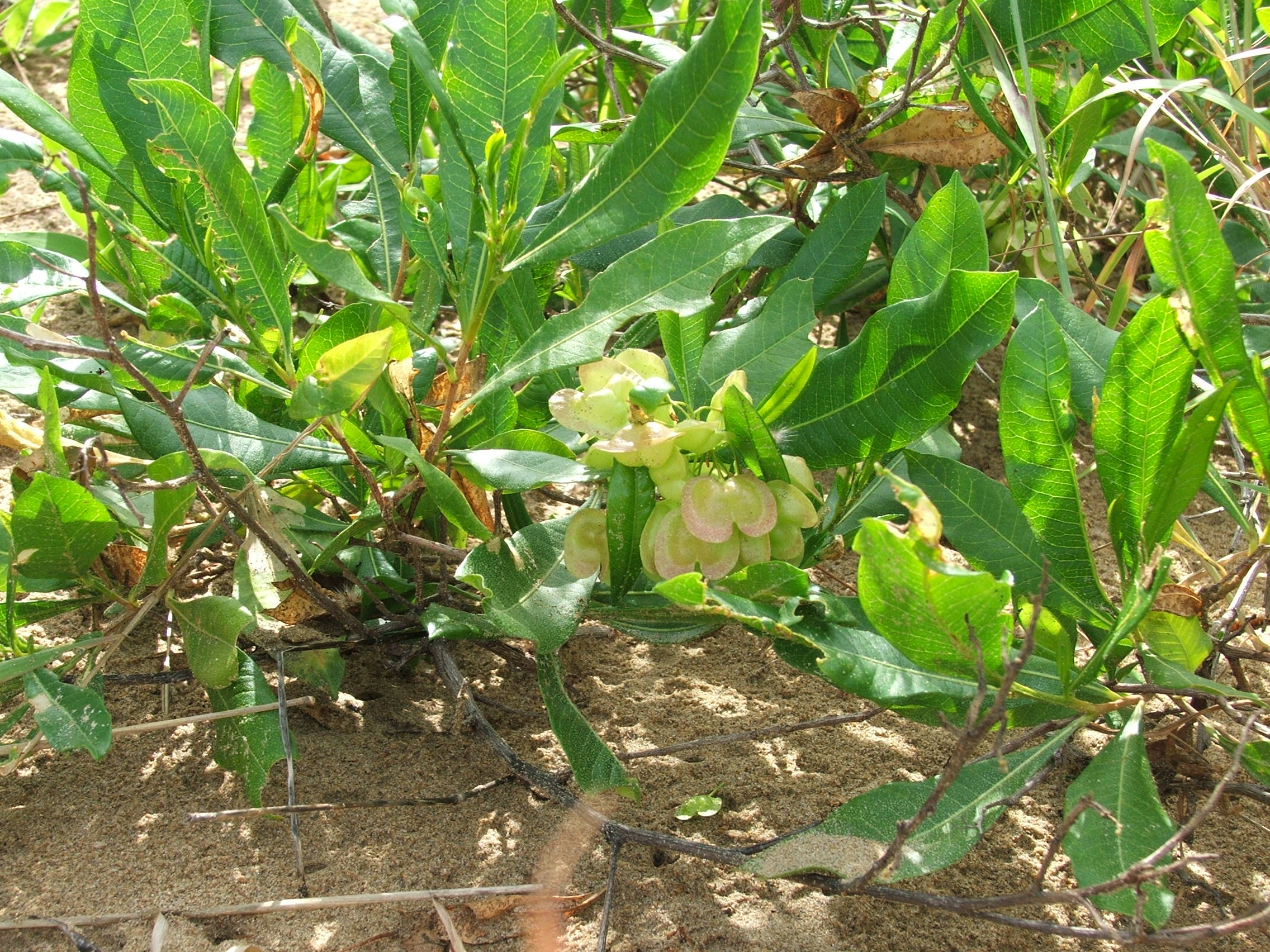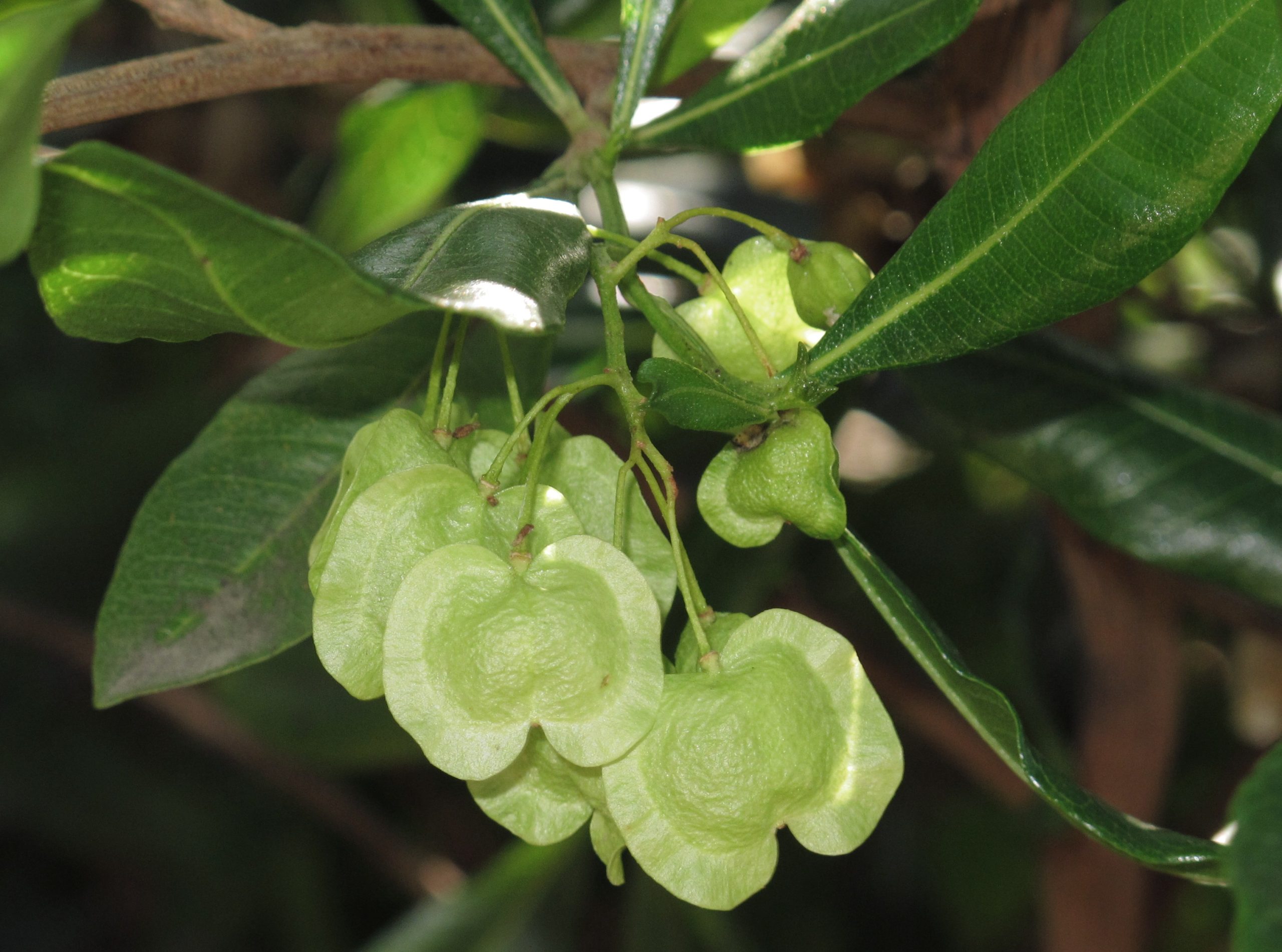Sticky hopbush
Dodonaea viscosa, Fam. Sapindaceae








Shrub to small tree up to 8m, often very viscid.
| Weed Category: | |
| Weed: | No |
| Form or habit: | Shrub, Small tree |
| Family: | Sapindaceae |
| Leaf: | Simple, entire or with wavy margins, lanceolate to narrowly elliptic or elliptic, 6.5-12.5 x 1.4-4cm, somewhat leathery, glabrous. Somewhat to very viscid. |
| Flower conspicuous: | Conspicuous |
| Flower colour: | |
| Flower description: | Terminal panicles of tiny, unisexual flowers without petals. Any month of the year. |
| Fruit conspicuous: | Conspicuous |
| Fruit colour: |
Red, Cream |
| Fruit: | |
| Fruit description: | Cream to red, two winged (rarely three) capsules. Winter to summer. |
| Habitat: | Coastal dune, open forest, woodland. |
| Distribution | Queensland, New Guinea, Melanesia, Malesia, Asia. |
| Food source for: | Fruit eaten by the red winged parrot, leaves eaten by the green rosella. Larval food plant of the fiery jewel butterfly. Larvae of the splendid ghost moth Aenetus eximius can be found in the lower stem and roots. |
| Toxicity: | No toxicity known |
| Origin: | Australia, New Guinea, Melanesia, Malesia, Asia. |
| Notes: | Hardy, requires well drained soil, will grow in full sun or partial shade. Cuttings strike readily. Seed germination can be improved by nicking the seed coat or brief immersion in water that is just off the boil. Leaves contain an alkaloid and are used in various parts of the world, including South Africa, India and Australia, for medicinal purposes such as the control of fever, rheumatism, venereal diseases and as an anaesthetic. The native people of Peru chewed the leaves as a stimulant like coca leaves and also mixed them with the latter. Capsules were used by early colonists in Australia as a substitute for hops in yeast and beer making. The wood is very hard and fine grained. |
| Information sources: | Melzer R. & Plumb J. (2007) Plants of Capricornia. |